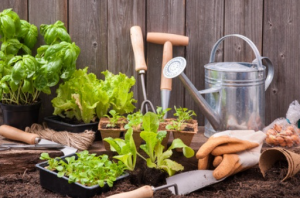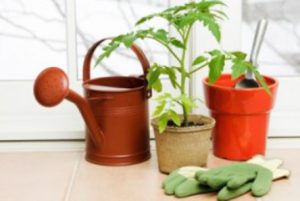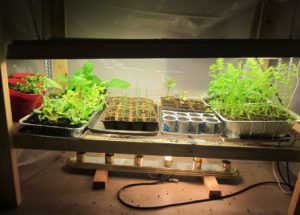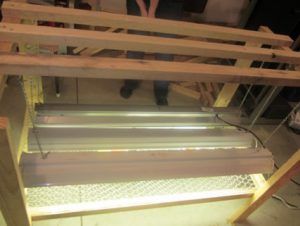
Love gardening, but lack a greenhouse or other way to get a head start on growth? While you could invest hundreds, perhaps thousands, of dollars on equipment and tools, you may already have the most important asset. Your garage can be an ideal solution for gardening, allowing you to save money on the food you eat throughout the year and become more self-sustaining.
Minor Preplanning
In order to enjoy fresh, delicious fruits and mature herbs throughout the year, you have to get an early start, well before the frost leaves for good. Take a look at your gardening books, the back of seed packets, and other sources of information and you’ll find that many plants do need a little time to get started, although some can grow quite quickly.
You can start plants indoors from bulbs, from cuttings, from seeds and in other ways. Anyone who has ever tried to start tomato plants from seeds knows the importance of giving them a head start so that when June arrives and there’s no more threat of frost, you can plant strong, healthy plants.
The purpose of using your garage isn’t necessarily to grow your plants from seed to maturity. Rather, it’s to provide a safe shelter for tender seedlings and young shoots to grow before winter loses its grip on the world. By starting your garden plants early in your garage, you’re able to achieve healthier, more robust growth, as well as increase the size of your harvest at the end of the year. You can start a number of vegetables in your garage and then move them outdoors when the threat of frost is past, including:
- Onions
- Lettuce
- Tomatoes
- Carrots
- Cabbage
- Broccoli
- Cauliflower
- Beets
- Many pepper varieties
- Brussels sprouts
- Herbs (virtually any type of herb)
- And more
You can also start your decorative household plants, and those used for medicinal treatments, such as aloe vera.
Setting Up Your Garage
Wait until you’ve had the last snowfall of the year, and move out your car (or cars). This should leave you with plenty of room for setting up an indoor gardening area. If you’ve ever started seeds indoors, you know there are three primary requirements that apply to all types of plants:

- Warmth
- Light
- Moisture
You’ll want to take care to set seedling trays on a riser, shelf, table or other structure to keep them off the concrete floor, as the cold seeping up from below can kill them quickly. You can build your own shelving system from 2×4 beam and plywood if you don’t already have a system in place.
You’ll also need to make sure that there is ample natural sunlight available wherever you set up your seed trays (or invest in artificial lighting for plants, called grow lights). Existing windows make good light sources, but be careful of cold drafts. Ideally, your garage will already be heated and insulated to provide an ideal growing environment.
The Basics for Getting Started
In order to get started, you’ll need a few basic supplies. First, you’ll need either trays or small pots for planting. You’ll find plastic available, but you can also purchase pots made of peat that will biodegrade. You can also repurpose items from around the home, including egg cartons (cardboard, preferably) and even yogurt cups.
You’ll need a little bit of soil, as well. Ideally, you’ll use a soil with the right mix of nutrients for each type of plant that you’re interested in growing. Read the seed packets or speak with a garden center employee to learn more.
You’ll need a thermometer to track the temperature in your garage, as well as a spray bottle with which to moisten the soil and your seeds. You do not want to over-wet them – they only need to stay moist, not damp. Finally, invest in a means of identifying individual plant types. You can use paint sticks, popsicle sticks and more. Just write the plant name on the stick and place it in the dirt.
In the way of lighting, you’ll need light fixtures that measure 7 or 12 inches by 48 inches, equipped with T-8 bulbs. Halogen and incandescent bulbs can work as well. You’ll need to attach your lights to a timer (or manually turn them on and off when necessary), and you’ll need some plastic sheeting to help keep your seeds and seedlings warm while reducing moisture evaporation.


Get Growing
Now that you have your garage set up, it’s time to get growing. Be patient, and learn as you go. You’ll find that companion planting can do wonders for your crops, too. For instance, basil and tomatoes go together well, and basil can actually help to prevent common tomato pests. However, don’t plant most cabbage-type plants (including kohlrabi and Brussels sprouts) near tomatoes.
What If Your Garage Door Isn’t Working Correctly?
If your garage door has seen better days, give us a call at 705-324-1005. We’ll be happy to provide a free quote by email, or even to make a service call to your home. If you’d rather replace your garage door, you can use our Design Centre to see how each style will look on your home, or scan through your options in our image gallery, if you prefer.







Add new comment